Recruitment is as much about storytelling as it is about sourcing. And at the heart of that story? Your employer branding strategy. It’s what turns a faceless job listing into an opportunity worth applying for, and your company into a place worth working.
With talent shortages still gripping key sectors, companies that invest in employer branding aren’t just surviving, they’re thriving. In fact, 80% of organisations have made employer branding a top priority 2025.
If you’re an HR leader, recruiter, or talent marketer wondering how to cut through the noise and attract the right candidates, this guide is for you. We’ll walk you through the key elements of a winning employer branding strategy: from defining your EVP to amplifying it with the right content and tools.
Let’s start with the basics: what do we really mean by employer branding, and how does a strong strategy set the foundation?

What is an employer branding strategy?
Your employer brand is how people perceive your company as a place to work. Your employer branding strategy is the deliberate plan to shape that perception.
Put simply, an employer branding strategy is a structured approach to attracting, engaging, and retaining talent through consistent messaging and candidate experience. It’s how you market your workplace. Not just to job seekers, but to current employees too.
This strategy includes everything from the content you share on LinkedIn to the tone of your job descriptions. It outlines how your company presents itself at every touchpoint across the candidate and employee journey.
A solid strategy starts with defining your Employer Value Proposition (EVP)—the core message about what makes your company worth joining and staying with. More on that later.
In short, your employer branding strategy is your playbook for becoming a company people want to work for and stay with.
"Your employer brand is more than a showcase—it’s a reflection of your culture and values. A career site with authentic employee stories, immersive behind-the-scenes content, and clear job insights builds trust, engages candidates, and increases conversions. Unlike social media, your site is a lasting resource that helps candidates envision their future with your company. — Charlène Hemery, Founder of TalentCatcher and former recruiter
Why employer branding strategy matters now
Employer branding is far from just a buzzword. It’s a critical differentiator that only your company can perfect, and no one will do for you. Candidates look for your employer brand, and they want to see one that jives with their values. In 2025, it’s one of the most important tools in your hiring arsenal.
With more roles going remote and more talent weighing purpose alongside pay, a clear, compelling employer brand helps you cut through the noise. It tells candidates not just what the job is, but why it matters and why they should do it with you.
Here’s what a strong employer branding strategy unlocks:
- Attract better talent: Candidates are selective and will reject companies that don’t have a positive reputation
- Hire faster and cheaper: Companies with strong employer brands fill roles faster and reduce cost-per-hire.
- Retain more employees: Teams that are proud of where they work stick around longer.
- Stand out in competitive markets: In tight labor markets or niche industries, your brand becomes your edge.
Our ‘State of Hiring in 2025’ report found that candidates who spend more time engaging with employer content are more likely to complete an application, and proceed further in the fitting process. This indicates that strong content—a key component of employer branding—directly correlates with stronger hiring outcomes.
“Employer branding is essential in a dynamic work environment and competitive job market. It’s not just a buzzword floating around in the HR world, but a crucial element that forms the foundation of a successful company. It plays a significant role in attracting, engaging, and retaining talent. — Monique Berg, Recruitment Manager at RecruitPartner
The 3 phases of the employer branding process
A standout employer brand isn’t built in a day. It takes planning, consistency, and iteration. To help you focus your efforts, we’ve broken the employer branding process into three repeatable phases.
- Planning. Lay the groundwork. Research your reputation, align with leadership, define your culture, and craft your Employer Value Proposition (EVP).
- Execution. Put the strategy into action. Update your materials, activate your EVP, and get employees involved.
- Refinement. Monitor the impact, collect feedback, and make data-informed improvements.
These phases aren’t linear. Employer branding is an ongoing cycle—one you’ll revisit often as your team evolves, your market shifts, and your brand grows.
Let’s take a closer look at how each phase works, and the 21 steps that make up the employer brand strategy process.
Phase 1: Planning your employer branding strategy
Before you launch into job ads or social media posts, you need a plan. This phase is all about building a foundation by understanding your company’s identity, aligning with business goals, and setting the direction for all employer brand efforts.
Without this groundwork, your messaging risks being inconsistent or misaligned.
Here’s how to set it up right:
1. Align with your company’s needs
Your employer brand must support business strategy. Start by syncing with leadership to understand goals like international expansion, skill gaps, or culture evolution.
As Karim, former Head of Talent at Tellent Recruitee, put it: “It always starts with connecting the company’s challenge and opportunity with the recruitment challenge and opportunity”.
2. Assess and develop company culture
Candidates don’t just want a job, they want to fit in. Review your current culture honestly. Do your values show up in daily behaviors? Are they inclusive and consistent across regions?
Culture is a key differentiator. You need to first understand what your culture is, who that appeals to, and how to tell that story well.
3. Set clear goals
Define measurable targets for your employer brand. Want to increase referral hires? Reduce time-to-hire? Boost Glassdoor ratings? Choose KPIs you can benchmark over time.
This ties directly to Step 18 below, where you’ll track success.
4. Get leadership buy-in
Employer branding needs executive endorsement. Leaders should embody and advocate for your EVP. Your CEO can be your best brand ambassador, but only if they genuinely walk the talk.
Collaborate and consult with leadership to understand your employer brand, and secure their commitment to help solidify and tell that story in the future.
5. Allocate resources and roles
This isn’t a solo mission. Build a cross-functional team including HR, marketing, recruiters, executive leadership, and employee advocates. Create an employer branding task force to ensure you get a full picture of the organization from many different perspectives.
Assign clear responsibilities. Who owns content? Events? Social media? Don’t forget to budget for tools, content creation, and campaigns.
6. Create target candidate personas
Tailor your message by understanding who you’re trying to reach.
Analyze top performers, interview hiring managers, and build a shortlist of ideal candidate personas. Research and identify what drives them, and why. Use these insights to shape tone and content.
7. Develop your Employer Value Proposition (EVP)
This is your promise to applicants. What do they gain by working at your company? It might be growth, purpose, flexibility, or culture. Make sure your EVP is rooted in truth and resonates with the personas you’ve created.
All of the work you did in step one to six will help you develop a thorough and authentic EVP.
8. Determine your branding channels and tactics
Now you know what to say. The next question is: where will you say it?
Choose channels your personas frequent: LinkedIn, tech forums, Instagram, Glassdoor, or elsewhere. Your job is to identify those channels and prioritize them in your marketing and outreach.
Your careers site is essential too. Remember: employer branding is the message, recruitment marketing is how you share it.
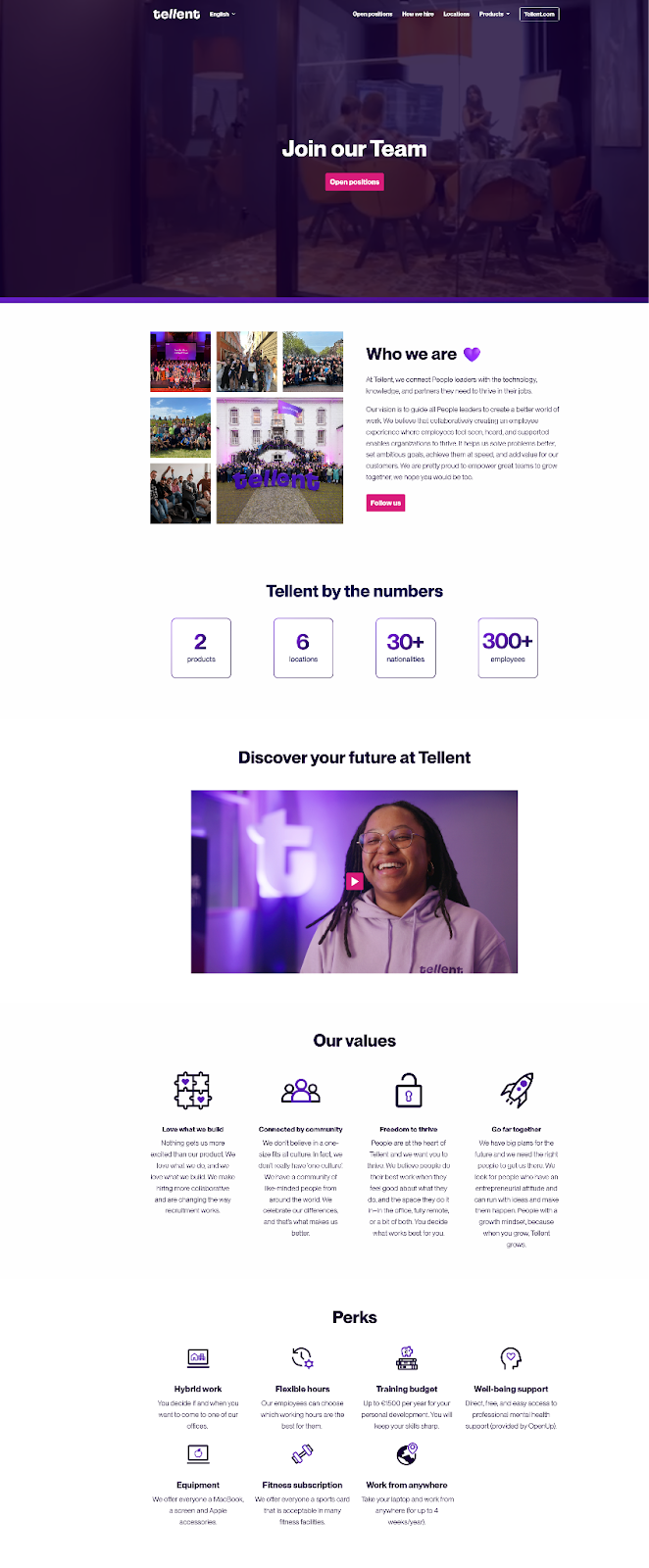
Phase 3: Executing your employer brand strategy
Execution is where the strategy takes shape. With your messaging defined and your personas clarified, it’s time to roll it out across every touchpoint.
This phase is all about turning planning into practice and making sure what you say about your brand aligns with what candidates actually see and feel.
Expect cross-functional collaboration here. HR, marketing, IT, and your employees themselves will all play a role. And consistency is key. The message should stay clear and cohesive whether someone’s reading a job description, browsing your careers page, or chatting with a recruiter.
9. Audit your existing employer branding materials
Take stock of what’s already out there. From your careers site and recruitment ads to internal onboarding docs, you want everything candidate-facing to reflect your new messaging.
Create a spreadsheet of these assets and flag anything that’s outdated, off-brand, or inconsistent in tone, visuals, or messaging. Make sure it answers what candidates actually want to know—like what it’s really like to work there, and what kind of growth or flexibility they can expect.
Want to check if your employer branding efforts are up to speed? Find out quickly with our employer branding checklist.
10. Audit your application process
Next, step into the candidate’s shoes. Is your application process smooth, short, and mobile-friendly? Are follow-up emails timely and on-brand? If not, you're likely losing talent mid-way.
Our ‘State of Hiring 2025’ report found that applicants are 14% more likely to drop off when expectations aren’t clear from the beginning—so clarity and simplicity are essential.
11. Ensure alignment with candidate needs
Once the audits are complete, tailor your updates to what candidates actually care about. If your personas value flexibility, highlight remote options across your site. If they prioritize growth, emphasize learning and development paths in your job descriptions.
12. Create and update content that showcases your employer brand
Your careers site should reflect who you are, not just what roles you have open.
Rewrite job descriptions in your brand voice, update the About page with your mission and values, and build out sections like employee stories or behind-the-scenes videos.
Tools like Tellent Recruitee’s CareersHub make this easier with templates and customization that help you build a rich, on-brand site fast.
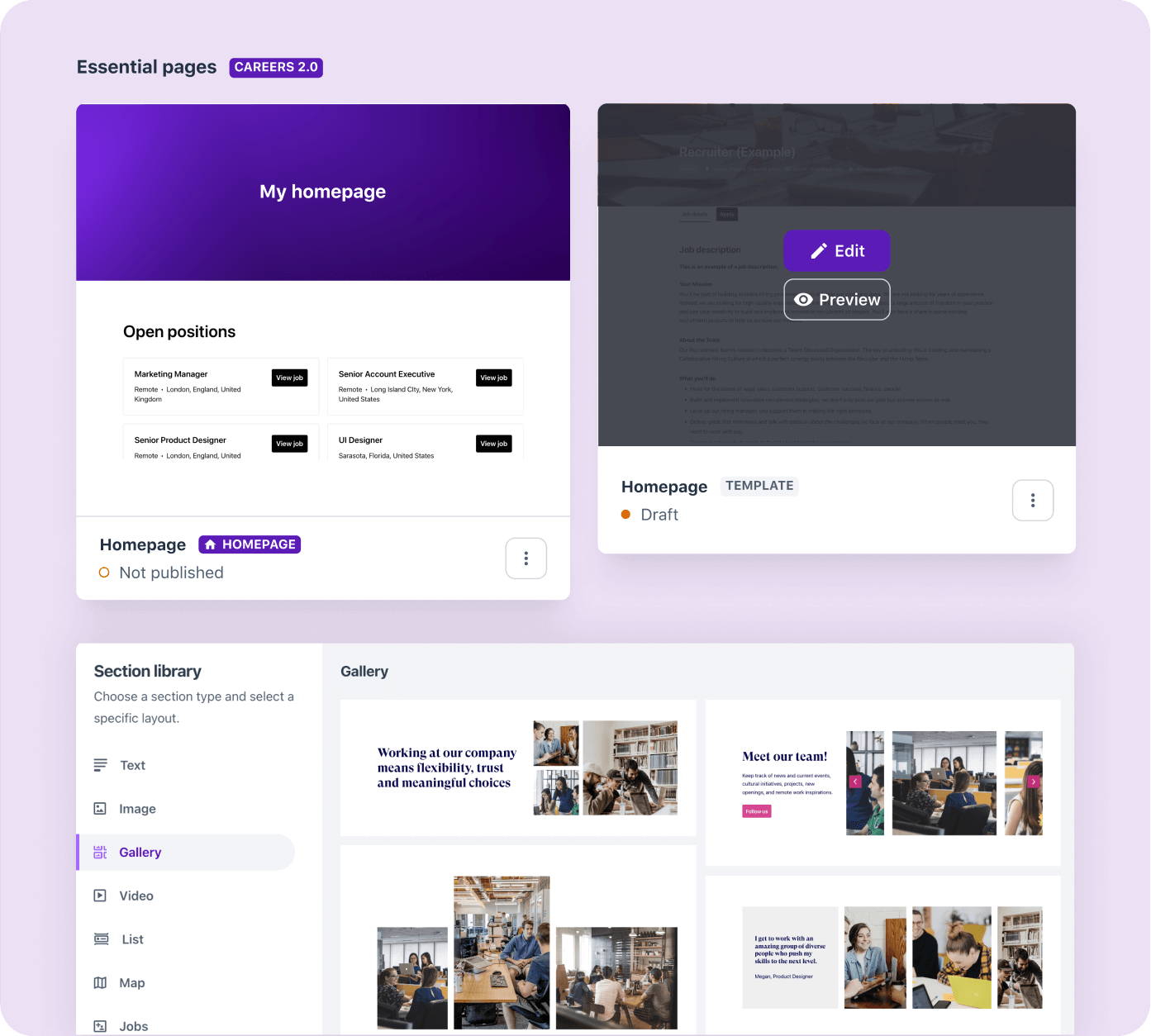
13. Involve your entire team
Your people are your best brand advocates. Encourage them to share life at work on LinkedIn or refer great-fit candidates. Use referral tools (like Tellent Recruitee’s ReferralsHub) to make participation simple.
Candidates trust employees more than corporate messaging—so give your team a voice.
14. Encourage sharing on social platforms
Equip your team with shareable content, hashtags, or templates that align with your brand. Feature real moments from the office, personal wins, or behind-the-scenes peeks.
And don’t forget to keep company channels active—whether that’s LinkedIn, Instagram, or even TikTok.
15. Leverage employee testimonials
Collect and highlight quotes, reviews, or short videos from employees about why they love working with you. Sprinkle these throughout your careers site, job ads, and social posts. Variety matters—get perspectives from different departments and levels for credibility and depth.
16. Use a mix of media and channels
Reach talent where they are. That might be a mix of LinkedIn posts, employee blogs, Instagram reels, Glassdoor reviews, or community events. Use video, copy, imagery, and audio depending on the platform.
Just keep the story consistent. And remember: transparency is king. Candidates want to know about salary, growth, DEI, and flexibility, so don’t be shy about showing it.
Phase 3: Measuring and refining your employer branding strategy
Employer branding isn’t a “set it and forget it” initiative. The final phase—Refinement—is where the work becomes sustainable. Here, you monitor what’s working, adapt what isn’t, and keep your strategy aligned with company evolution and candidate expectations.
The best employer branding strategies operate on a continuous improvement loop. Regular review ensures you stay relevant, data-driven, and differentiated in a competitive hiring market.
17. Test and experiment
Don’t treat your strategy as static. Run small experiments to see what resonates—whether it’s A/B testing your careers page visuals, piloting different EVP messaging, or shifting tone in job descriptions.
Some ideas may flop. Others might drive big gains. Either way, it’s how you learn. Use short candidate surveys (e.g., “What made you apply?”) to capture direct feedback that validates which messages and platforms work best.
18. Measure your KPIs vs. goals
Now’s the time to track whether your employer branding strategy is actually delivering. Key metrics to monitor include:
- Talent attraction: number and quality of applicants, conversion rates, career site performance.
- Candidate experience: drop-off rates, offer acceptance rate, interview feedback.
- Employer reputation: employee referrals, social engagement, Glassdoor ratings.
- Hiring efficiency: time-to-hire, cost-per-hire.
- Retention: new hire turnover, engagement metrics.
Use tools like Tellent Recruitee’s reporting and analytics to visualize these KPIs in real time, so you can connect brand efforts to actual recruitment performance.
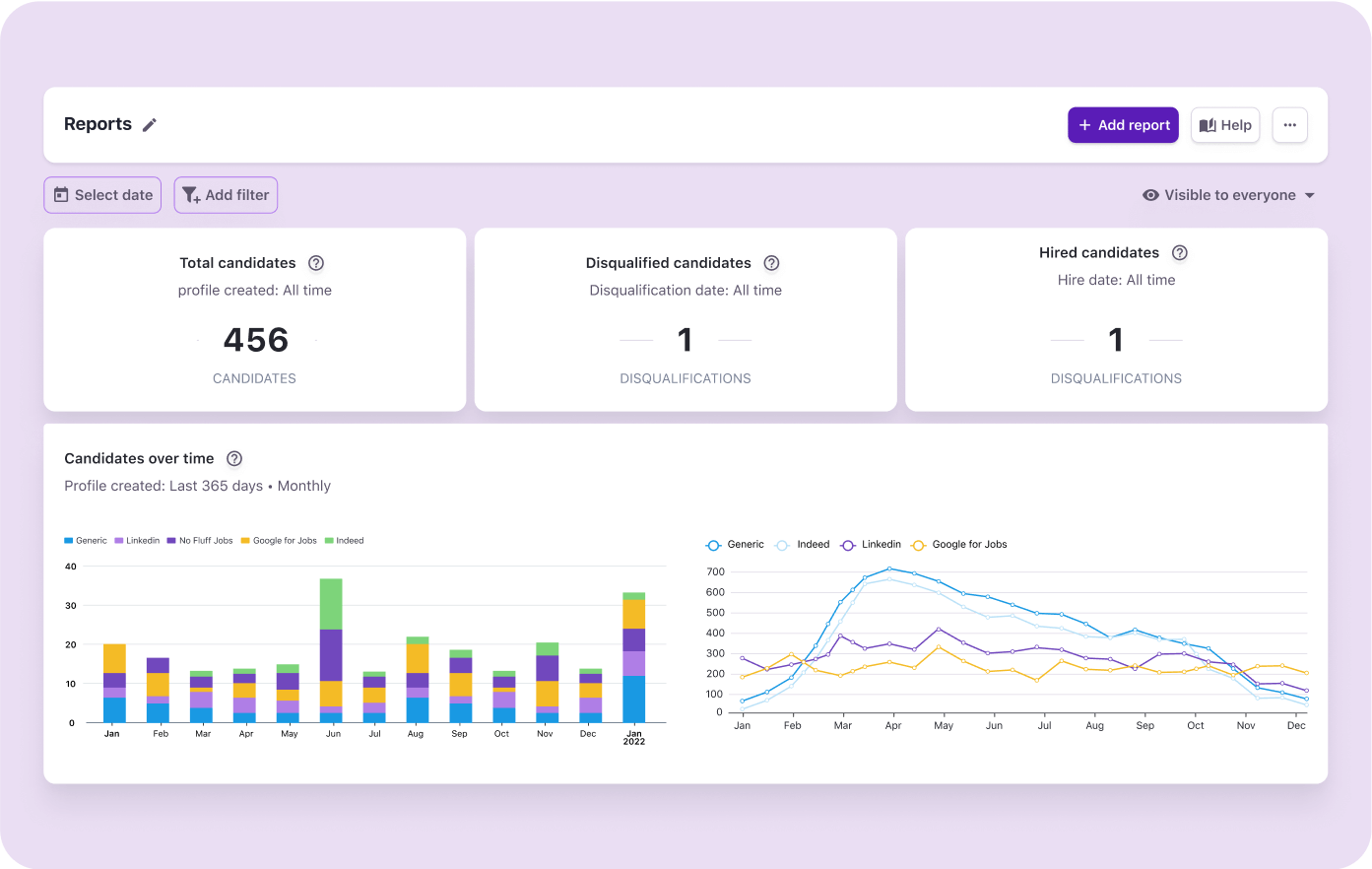
19. Quarterly reviews and adjustments
Block time every quarter to review what’s changed. Look at the data, but also gather qualitative input.
- What are people saying in exit interviews or online reviews?
- What content drove the most traffic or engagement?
- What are your recruiters hearing in their screening interviews?
Treat your employer brand like a product. Iterate based on what’s working, fix what isn’t, and don’t be afraid to tweak your EVP if feedback suggests it’s misaligned.
20. Get ongoing input from the team and candidates
Create open channels for feedback. Candidate experience surveys, employee pulse checks, and recruiter insights all help paint a picture of how your brand is perceived in the wild.
Ask your team what they’re hearing in interviews. Encourage employees to flag inconsistencies or share fresh ideas. They’re your frontline brand ambassadors and a rich source of insight.

21. Revisit and refresh annually
Once a year, step back and assess the full strategy. Has your business changed? Have employee priorities shifted? Does your current EVP still hold up? An annual employer branding action plan refresh ensures your strategy evolves with your company, not behind it.
Re-run audits, realign goals, and reenergize the plan.
By measuring and refining, you turn employer branding into a long-term advantage—one that attracts the right people, keeps top talent, and positions your team for smarter, faster hiring ahead.
Examples of great employer branding strategies
Employer branding doesn’t have to follow a single formula. The strongest strategies reflect each company’s unique culture, values, and voice. Here are three standout examples to inspire your own approach:
Netflix—culture-first transparency
Netflix’s employer brand is built around its bold “Freedom & Responsibility” culture. Their original culture memo laid the groundwork for a high-autonomy, high-performance environment that’s not for everyone—and that’s the point.
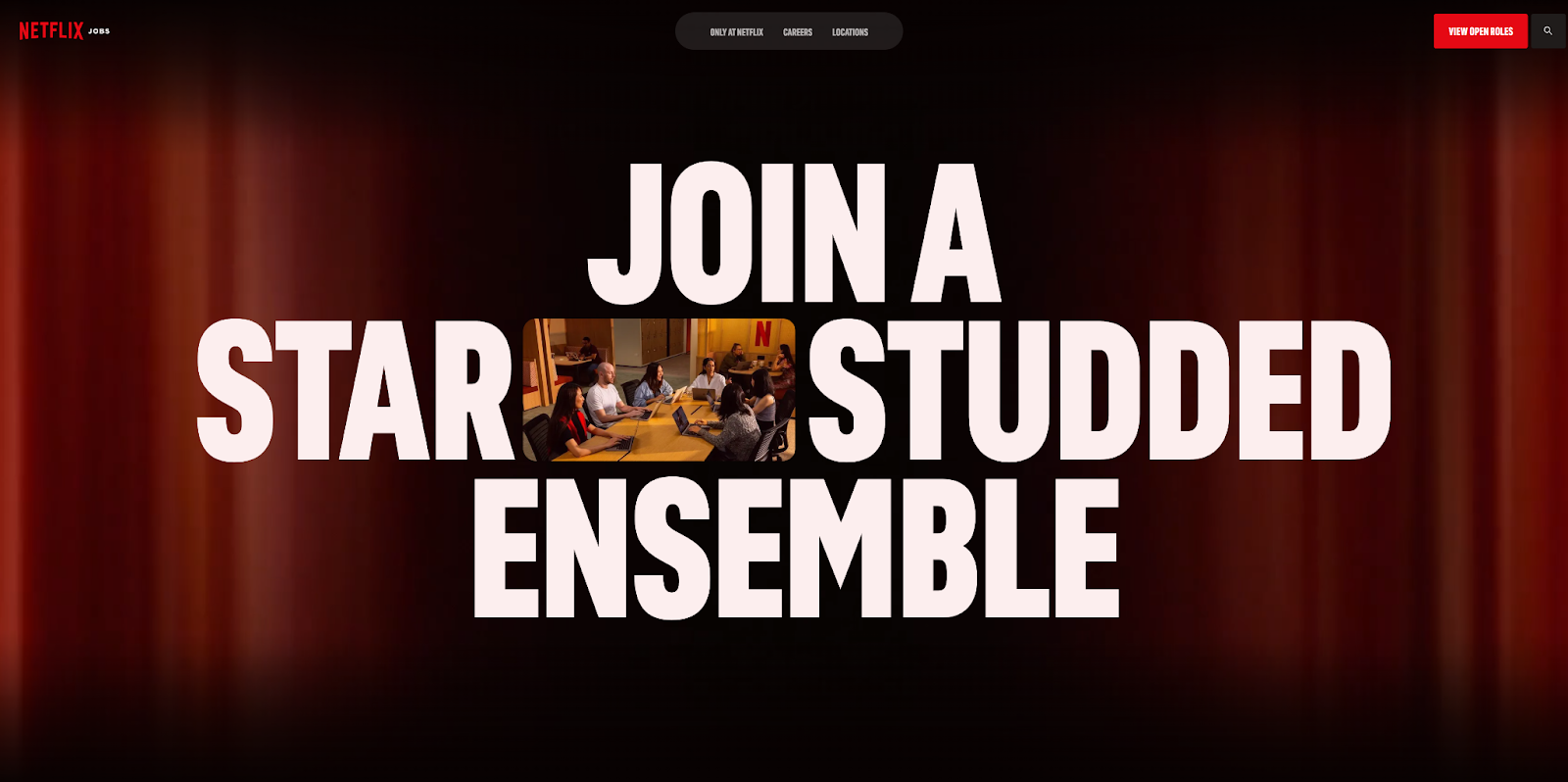
Through their careers site and “WeAreNetflix” podcast, they share real stories and insights from employees, giving candidates an unfiltered view of what it’s like to work there.
Takeaway: Boldly and consistently communicate your real culture to attract the right-fit talent.
Heineken—personality-driven storytelling
Heineken’s “Go Places” campaign positioned the employee journey as an adventure, celebrating diversity, creativity, and international opportunities across their 70+ markets.
That campaign was in 2016, but they’ve continued this theme and playful brand ever since. This makes their messaging authentic, and distinctly “Heineken”—and it attracts talent seeking both fun and purpose.
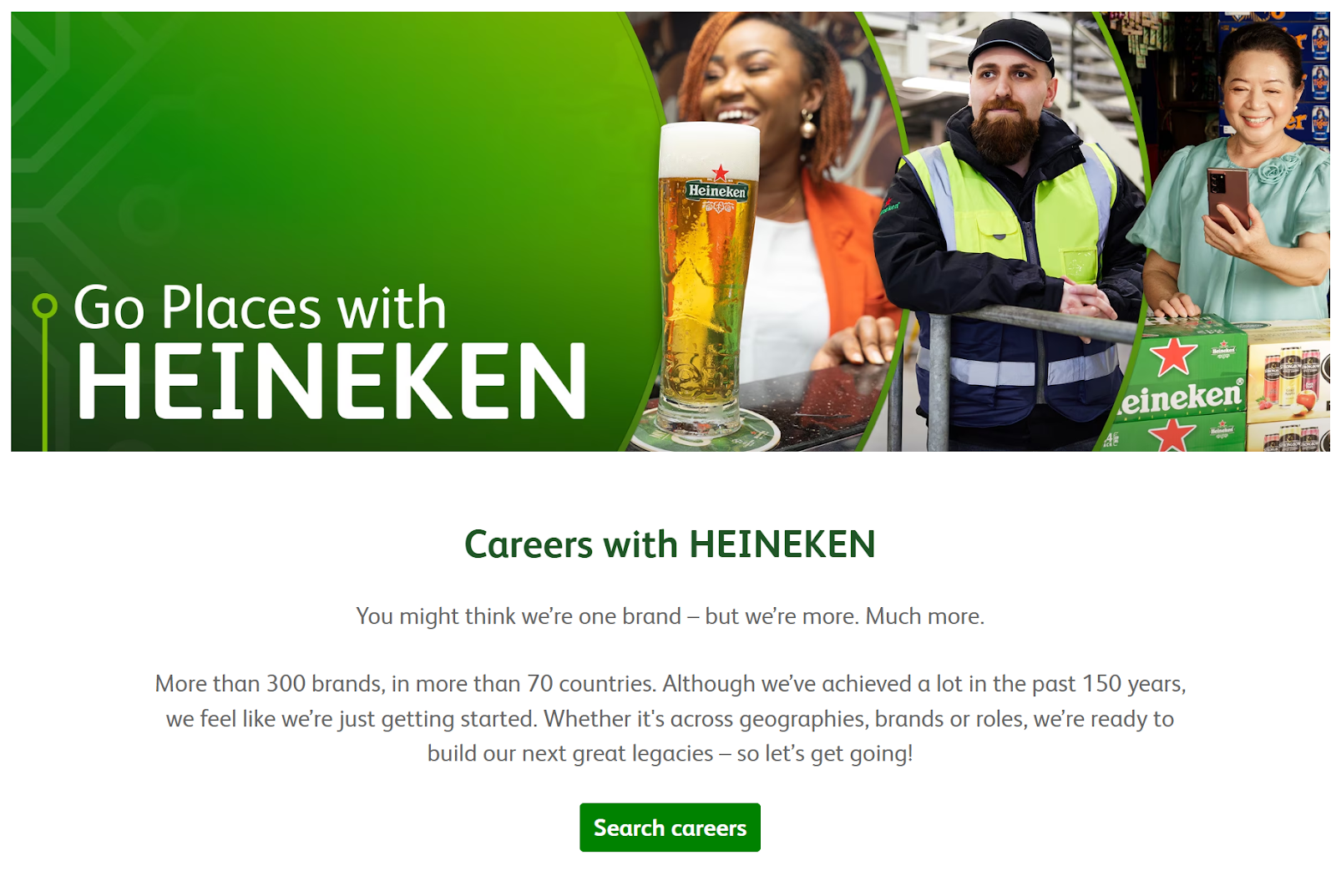
Takeaway: Infuse your employer brand with personality and a clear sense of journey to engage globally minded candidates.
These examples show there’s no one-size-fits-all approach. The best employer branding strategies reflect your unique DNA. The common thread is always authenticity and consistency.
Your employer branding strategy checklist
Before you wrap up your strategy, here’s a quick-hit checklist of best practices to keep your employer branding on track:
- Be authentic. Showcase the real experience of working at your company. If you promote a “flat hierarchy,” make sure that’s the day-to-day reality—candidates will spot inconsistencies.
- Ensure internal buy-in: Your employer brand starts from within. If employees don’t believe in the story you’re telling externally, focus on culture improvements first.
- Maintain consistency: Align messaging across all candidate touchpoints—job ads, interviews, onboarding, and internal comms. It should all feel like one seamless experience.
- Prioritize candidate experience: Ghosting applicants or delaying feedback damages your brand. Respectful, timely communication is a brand-building opportunity in itself.
- Leverage data: Track what works—content engagement, conversion rates, review sentiment—and use that insight to improve your employer branding strategy over time.
- Stay current: Employer branding is a living system. As roles, platforms, and candidate priorities shift, revisit and refresh your strategy regularly.
These best practices form the foundation of a strong, adaptable employer branding strategy that grows with your business.
Build an employer brand that top talent can’t ignore
Building an employer branding strategy takes time, but it pays off in every stage of hiring—from faster fills to better fit.
A strong employer brand makes hiring easier, cheaper, and more effective. It attracts people who stay longer and contribute more. As our ‘State of Hiring’ report shows, companies that prioritize branding and candidate engagement move faster and see stronger pipeline outcomes.
So if you haven’t yet, start today. Assess where you are. Define where you want to go. And take the first step toward building a brand that not only attracts talent, but keeps it.






.jpg?width=1000&name=6797ca7472b2ad806be9bc16_partial-view-of-journalist-holding-microphone-isol-2021-09-03-07-42-34-utc%20(1).jpg)


